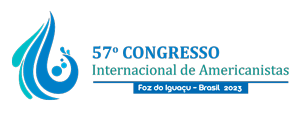| Dados do autor | |
|---|---|
| Sua instituição | University of Warsaw UW |
| País de origem do autor | Polônia |
| Dados co-autor(es) [Máximo de 2 co-autores] | |
| Email escondido; Javascript é necessário. | |
| Nome completo | Ruddy Chavez Perea |
| Sua titulação | Mestre |
| País de origem do co-autor | Peru |
| Instituição | Universidad Católica de Santa María en Arequipa UCSM |
| Proposta de Paper | |
| Área Temática | 02. Arqueologia |
| Grupo Temático | Arqueologia Inka |
| Título | Capacocha from Misti, Pichu Pichu and Ampato (Peru). Anthropological analysis of human remains. |
| Resumo | One of the most important rituals in the Inca Empire was the capacocha. It required the most prestigious sacrificial offering of both male and female children, and young women, who were characterized by their beauty and purity. The aim of this paper is to present the results of a bio-anthropological analysis of the remains of individuals sacrificed on the summits of Misti, Ampato and Pichu Pichu during this ceremony. |
| Palavras-chave | |
| Palavras-chave |
|
